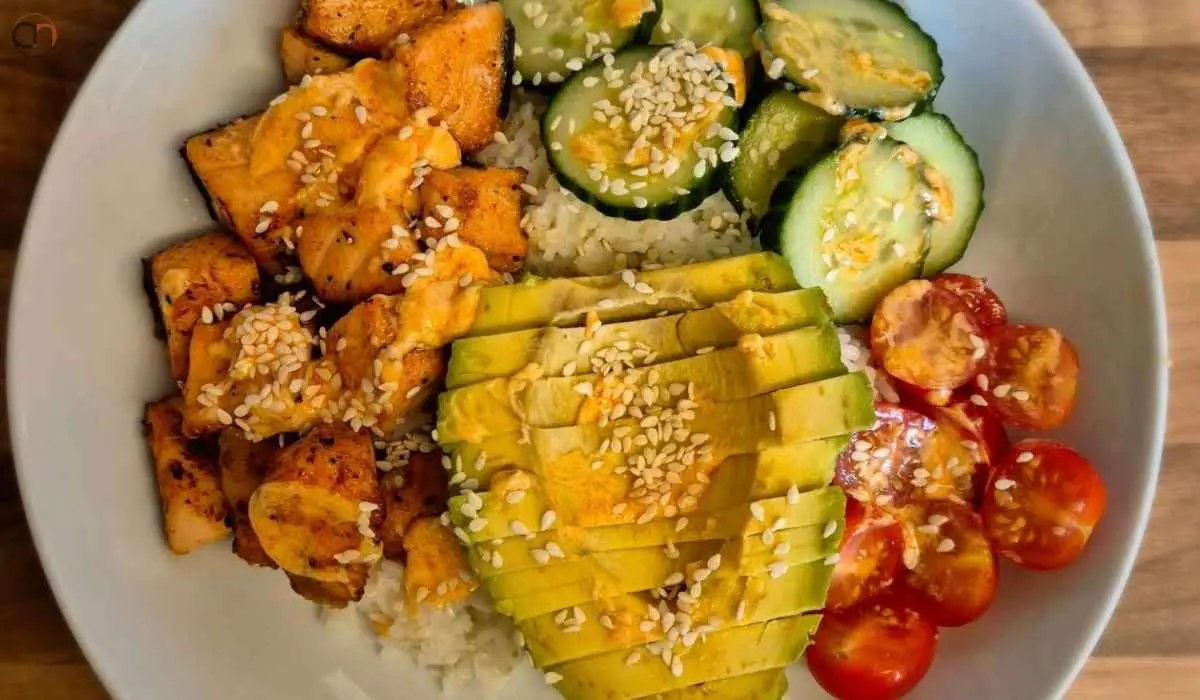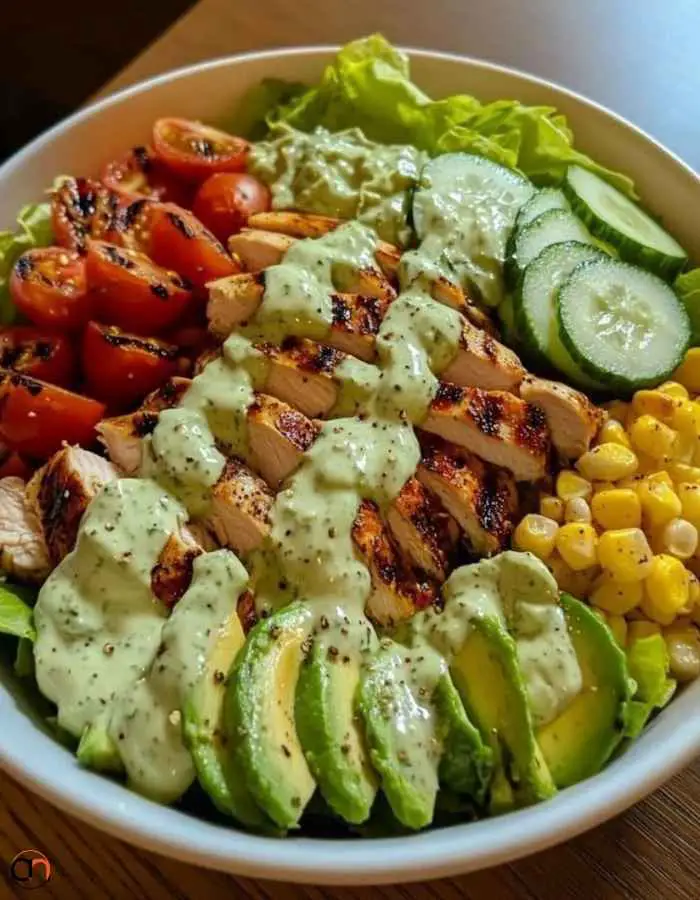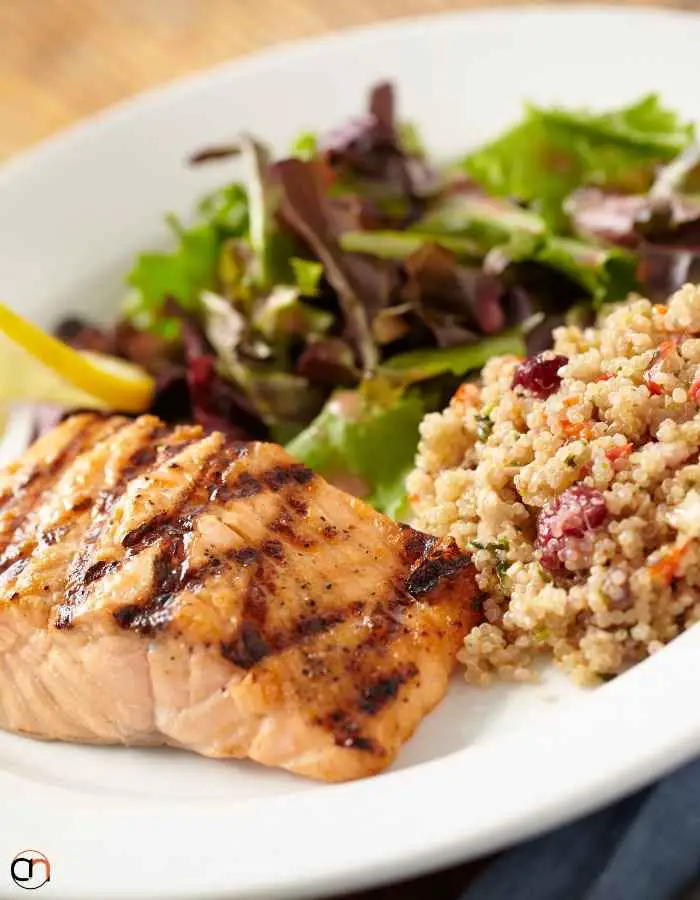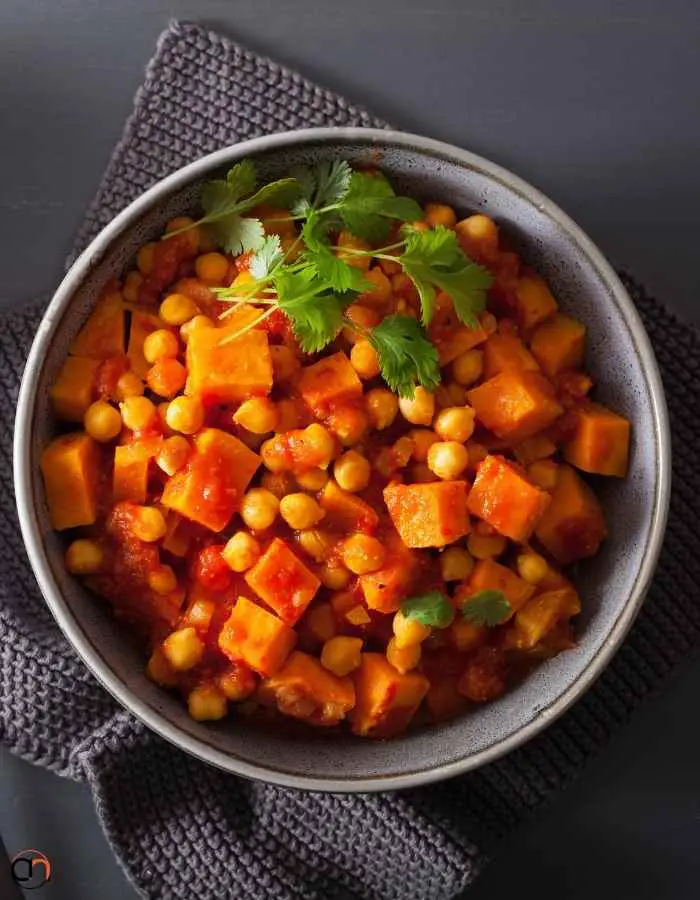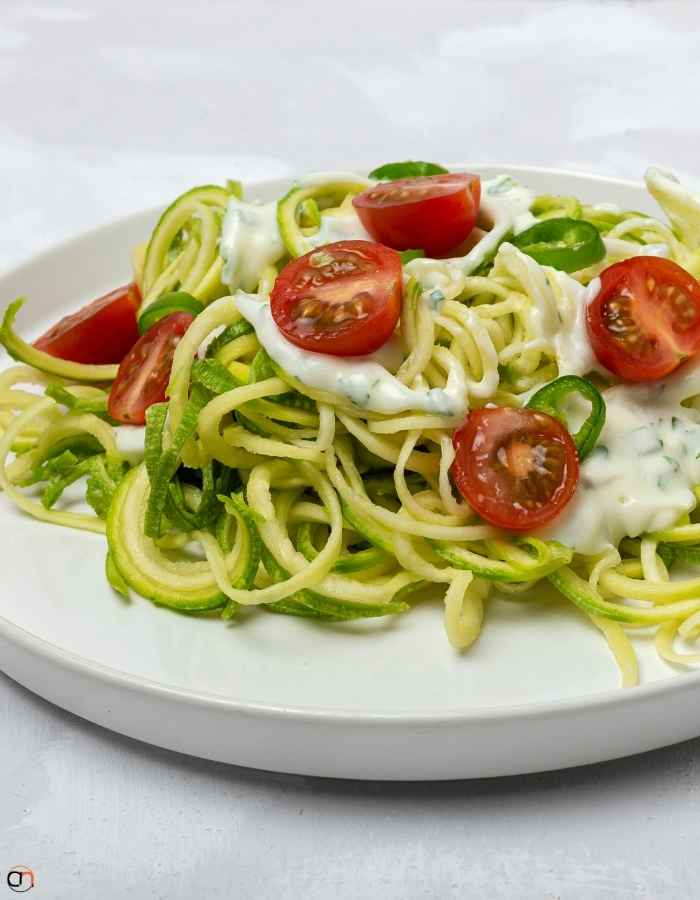Eating healthy doesn’t have to mean sacrificing flavor or excitement. With the right ingredients and a little creativity, healthy food dishes can be vibrant, satisfying, and full of delicious taste.
If you’re looking to fuel your body, manage your weight, or simply feel your best, there’s a world of nutritious meals that are anything but boring.
Enjoy colorful bowls to hearty salads and wholesome mains, let’s dive into a variety of Healthy Food Dishes that are as good for your body as they are for your taste buds.
Benefits of Healthy Food Dishes:
Eating well isn’t just about staying fit—it’s about fueling your body and mind with the right nutrients. Healthy food dishes offer a wide range of benefits that go far beyond the plate, positively impacting your energy, mood, and long-term wellness.
-
Boosts Overall Health – Supports immune system, organ function, and cellular health.
-
Helps Manage Weight – Balanced meals can help maintain or reduce weight without crash dieting.
-
Improves Digestion – High-fiber dishes support gut health and regularity.
-
Enhances Energy Levels – Nutrient-dense foods keep you energized all day.
-
Lifts Mood and Focus – Whole foods stabilize blood sugar, improving mental clarity and emotional well-being.
-
Lowers Risk of Chronic Illness – Reduces the likelihood of heart disease, diabetes, and more.
-
Promotes Better Sleep – Supports natural sleep cycles with calming, sleep-friendly nutrients.
-
Improves Skin and Hair – Antioxidants and hydration-rich foods give your skin a natural glow.
Types of healthy food dishes:
Healthy eating doesn’t have to be boring or repetitive. With a wide variety of dishes catering to different tastes and needs, healthy meals can be flavorful, satisfying, and fun to prepare.
Here are some popular types of healthy food dishes:
-
Salads – Loaded with greens, veggies, lean proteins, nuts, and healthy dressings.
-
Grain Bowls – Featuring quinoa, brown rice, or bulgur with vegetables and lean proteins.
-
Stir-Fries – Quick and colorful meals with veggies and protein, often paired with light sauces.
-
Smoothie Bowls – Blended fruits topped with granola, seeds, and fresh fruit.
-
Soups & Stews – Broth-based or hearty veggie blends with beans, lentils, and lean meat.
-
Wraps & Lettuce Cups – Fresh, portable meals using whole grain wraps or leafy greens.
-
Baked Dishes – Such as baked salmon, chicken with herbs, or veggie casseroles.
-
Plant-Based Plates – Meals focused on legumes, tofu, and colorful veggies.
-
Healthy Pasta Dishes – Whole wheat or legume-based pasta with veggie-packed sauces.
-
Overnight Oats & Yogurt Parfaits – Perfect for a nutritious breakfast or snack.
Each of these categories offers countless variations, allowing you to mix and match based on preferences, dietary needs, or what’s in your fridge.
3 healthy food dishes Ideas:
Here are 3 healthy food dishes with step-by-step recipe guidelines to make your meals nutritious and delicious:
1. Grilled Lemon Herb Salmon with Quinoa Salad
Ingredients:
-
2 salmon fillets
-
Juice of 1 lemon
-
2 cloves garlic, minced
-
1 tbsp olive oil
-
1 tsp dried oregano
-
Salt & pepper to taste
-
1 cup cooked quinoa
-
1/2 cucumber, diced
-
1/2 cup cherry tomatoes, halved
-
Fresh parsley (optional)
Instructions:
-
Marinate the Salmon: In a bowl, combine lemon juice, garlic, olive oil, oregano, salt, and pepper. Place salmon fillets in the marinade and refrigerate for 15–30 minutes.
-
Cook the Quinoa: Rinse quinoa and cook according to package instructions. Let cool.
-
Make the Salad: In a large bowl, combine cooked quinoa, cucumber, cherry tomatoes, and parsley. Toss with olive oil, lemon juice, salt, and pepper.
-
Grill the Salmon: Heat a grill or pan over medium heat. Cook salmon skin-side down for 4–5 minutes, then flip and cook for another 3–4 minutes until cooked through.
-
Serve: Plate the quinoa salad and top with grilled salmon.
2. Chickpea and Sweet Potato Buddha Bowl
Ingredients:
-
1 large sweet potato, cubed
-
1 can chickpeas, drained and rinsed
-
1 tbsp olive oil
-
1/2 tsp paprika
-
1/2 tsp cumin
-
Salt & pepper to taste
-
1 cup cooked brown rice or quinoa
-
1 cup kale or spinach, steamed
-
1/2 avocado, sliced
-
2 tbsp tahini
-
1 tsp lemon juice
-
Water for thinning
Instructions:
-
Roast the Veggies: Preheat oven to 400°F (200°C). Toss sweet potato cubes and chickpeas with olive oil, paprika, cumin, salt, and pepper. Roast on a baking sheet for 25–30 minutes, flipping halfway.
-
Steam the Greens: Steam kale or spinach until just wilted, about 3 minutes.
-
Cook the Grain: Prepare rice or quinoa if not already cooked.
-
Make the Dressing: Mix tahini with lemon juice and enough water to reach a creamy consistency.
-
Assemble the Bowl: Start with grains, then add sweet potatoes, chickpeas, greens, avocado, and drizzle with tahini dressing.
3. Zucchini Noodles with Pesto and Cherry Tomatoes
Ingredients:
-
2 medium zucchinis, spiralized
-
1 cup cherry tomatoes, halved
-
1/4 cup grated Parmesan (optional)
-
1 tbsp olive oil
For the Pesto:
-
1 cup fresh basil leaves
-
1/4 cup pine nuts
-
1/3 cup olive oil
-
1 garlic clove
-
1/4 cup grated Parmesan (optional)
-
Salt to taste
Instructions:
-
Make the Pesto: In a food processor, blend basil, pine nuts, garlic, Parmesan (if using), and salt. Slowly add olive oil until smooth.
-
Prepare the Zoodles: Spiralize the zucchini or use pre-spiralized noodles.
-
Sauté the Zoodles: Heat 1 tbsp olive oil in a pan. Add zoodles and sauté for 2–3 minutes until slightly tender.
-
Add Tomatoes: Toss in cherry tomatoes and cook for another minute.
-
Mix with Pesto: Remove from heat, stir in pesto, and top with Parmesan if desired.
Tips for Making Healthy Meals:
1. Plan Ahead
-
Create a weekly meal plan and grocery list.
-
Prep ingredients like chopped veggies, cooked grains, or marinated proteins in advance.
2. Choose Whole, Fresh Ingredients
-
Opt for whole grains (quinoa, brown rice), lean proteins (chicken, tofu, fish), and plenty of colorful fruits and vegetables.
-
Avoid ultra-processed and pre-packaged foods when possible.
3. Cook with Healthy Fats
-
Use olive oil, avocado oil, or nuts/seeds for healthy fats.
-
Limit butter, lard, and trans fats.
4. Use Herbs and Spices for Flavor
-
Skip the excess salt and sugar by seasoning meals with garlic, ginger, cumin, turmeric, basil, etc.
-
Fresh herbs can elevate even simple dishes.
5. Balance Your Plate
-
Follow the plate method: half veggies, a quarter lean protein, and a quarter whole grains or starchy vegetables.
-
Include fiber, protein, and healthy fat in every meal to stay full and energized.
6. Smart Cooking Methods
-
Bake, grill, steam, roast, or sauté instead of deep-frying.
-
Use parchment paper or nonstick pans to reduce oil.
7. Portion Mindfully
-
Be aware of portion sizes—use smaller plates or bowls if needed.
-
Avoid eating straight from bags or containers.
8. Hydrate and Eat Mindfully
-
Drink water throughout the day and with meals.
-
Slow down and enjoy each bite—mindful eating helps avoid overeating.
Common Myths About Healthy Eating:
Myth 1
Truth: Healthy meals can be incredibly flavorful with the right herbs, spices, and cooking methods. Think roasted veggies, spicy stir-fries, and zesty grain bowls!
Myth 2
Truth: Your body needs healthy fats like those found in avocado, olive oil, nuts, and seeds. It’s about choosing the right fats—not eliminating them.
Myth 3
Truth: Not all carbs are created equal. Whole grains, fruits, and vegetables are great sources of fiber and energy. Refined carbs are what you should limit.
Myth 4
Truth: With a little planning, eating healthy can be budget-friendly. Frozen produce, bulk grains, and meal prepping can all help save money.
Myth 5
Truth: It’s all about balance, not restriction. You can enjoy treats in moderation as part of a healthy lifestyle.
Myth
Truth: While organic can be a great choice, eating more whole foods—organic or not—is far more important than stressing over labels.
Key Take Away:
- Healthy Food Dishes isn’t about strict limitations or unrealistic rules—it’s about balance, variety, and making smarter choices.
- By understanding the myths and focusing on nutrient-rich, satisfying foods, you can enjoy meals that are both delicious and nourishing every day, & join us.
Read Next: 20 Minecraft Party Food
FAQs:
1. What is the simplest way to start eating healthy?
Start by adding more whole foods like fruits, vegetables, whole grains, and lean proteins into your meals, and reduce processed items gradually.
2. How can I make healthy meals taste better?
Use fresh herbs, spices, citrus, and healthy sauces. Roasting, grilling, or sautéing also boosts flavor without extra calories.
3. Is it okay to have cheat meals?
Yes, enjoying your favorite indulgent foods in moderation is perfectly fine and helps with long-term sustainability.
4. Can I still eat out and be healthy?
Absolutely! Look for grilled options, ask for dressings on the side, and choose dishes with plenty of veggies and lean protein.
5. Do I have to count calories to eat healthy?
Not necessarily. Focus on portion control and food quality instead of obsessing over every calorie.
6. What if I have a limited grocery budget?
Buy in bulk, shop seasonal produce, use frozen fruits/veggies, and plan meals to cut waste and cost.
Would you like a printable healthy eating checklist or a starter meal plan?

